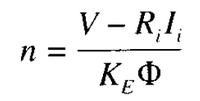jamalAbadin
Newbie level 3
Hello and thank you for helping me out with my doubts.
I've been trying to convert a small air pump from working with a car lighter to working with an AC/DC adapter, for home use.
The pump is identical to this one but is rated for 300 psi instead of 250: **broken link removed**
The pump has no amperage information, it only states that it's 12V DC.
I've searched around and some of this pumps say that the car lighter should be of 15 amps or higher(??).
I've tried wiring the motor with an adapter that's rated for 12V, but only 500mA.When i turned it on, the motor ran really slow and hardly any air came out of the pump.
My questions here are:
I've been trying to convert a small air pump from working with a car lighter to working with an AC/DC adapter, for home use.
The pump is identical to this one but is rated for 300 psi instead of 250: **broken link removed**
The pump has no amperage information, it only states that it's 12V DC.
I've searched around and some of this pumps say that the car lighter should be of 15 amps or higher(??).
I've tried wiring the motor with an adapter that's rated for 12V, but only 500mA.When i turned it on, the motor ran really slow and hardly any air came out of the pump.
My questions here are:
- 1 Will another adapter with higher or lower voltage work with this pump? I have other adapters. None of them is rated for 12V, but they have bigger current capacity. For that purpose I would like to understand how different voltage and amperage values affect the working of the motor.
- 2 How does the motor draw more or less current? Does it have a certain speed at which it runs, and if it runs slower than that speed, it pulls out more amps?
- 3 This is kind of a different question. The air pump is a bit loud, I deduce that most of it's noise is a result of vibration, so would rubber padding at strategic places make the pump quieter?
- 4 The pump will be used only to fill up inflatables and basketballs, as opposed to car tires. Will that diminish the current needed by the pump?
